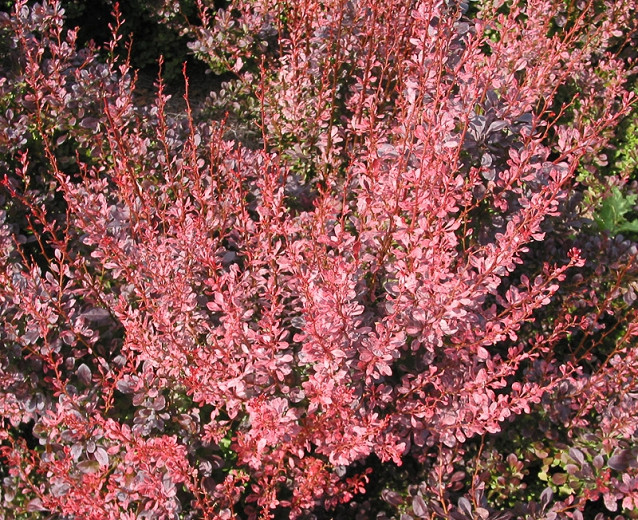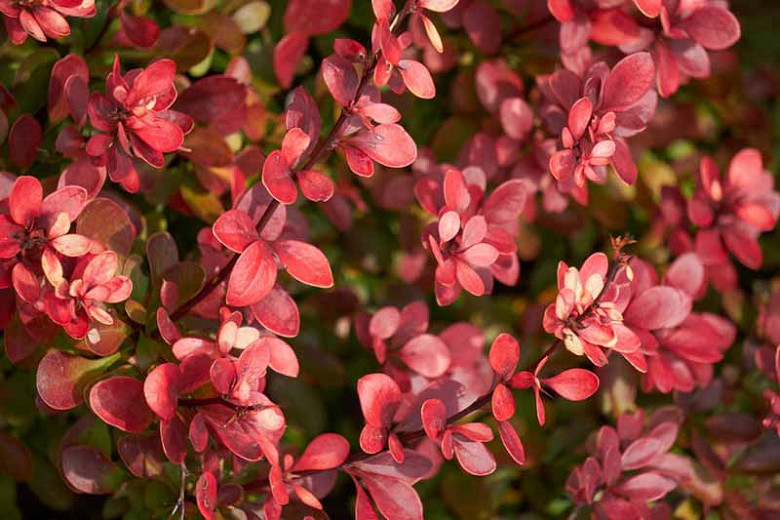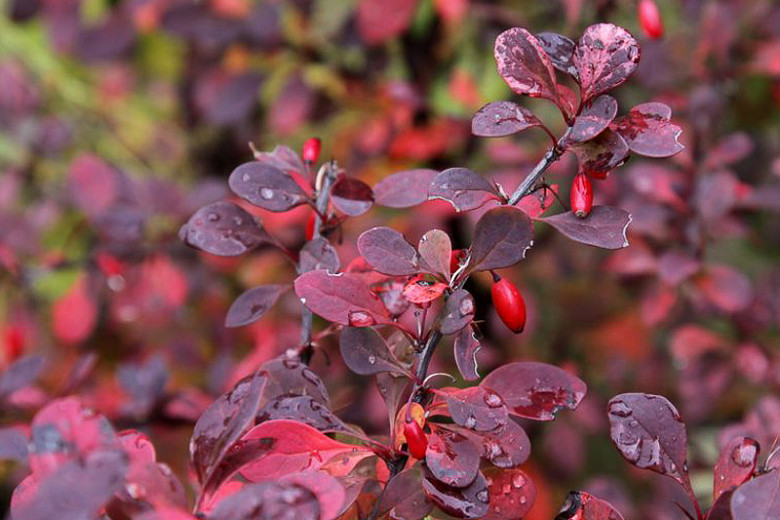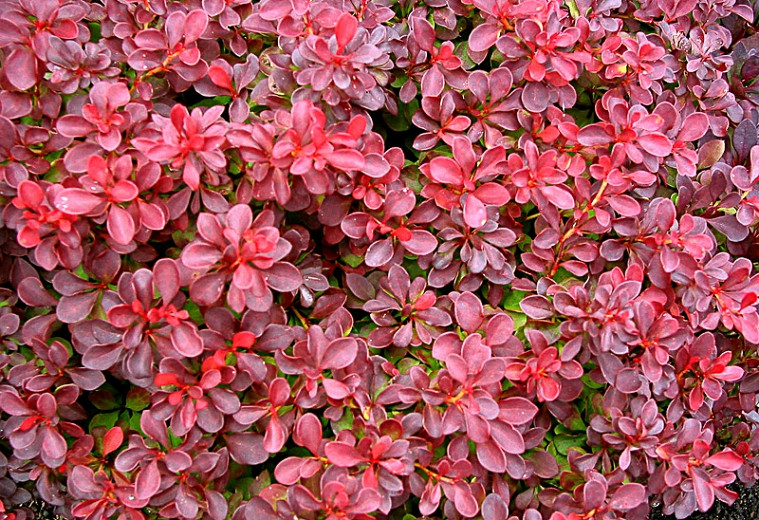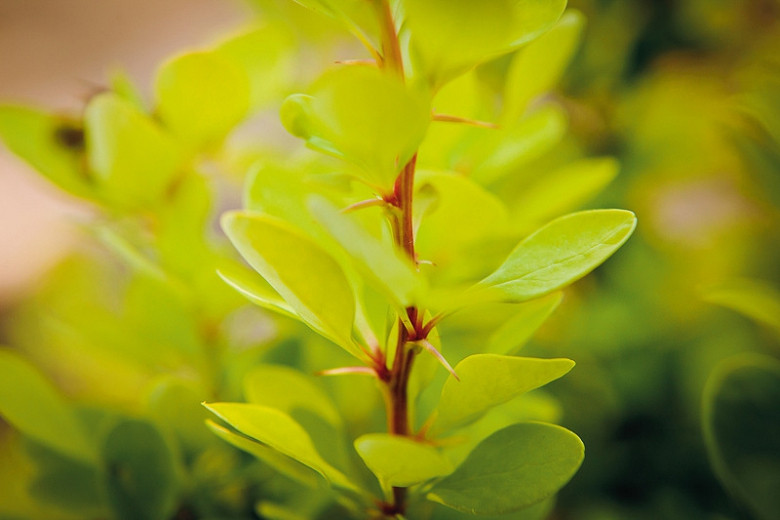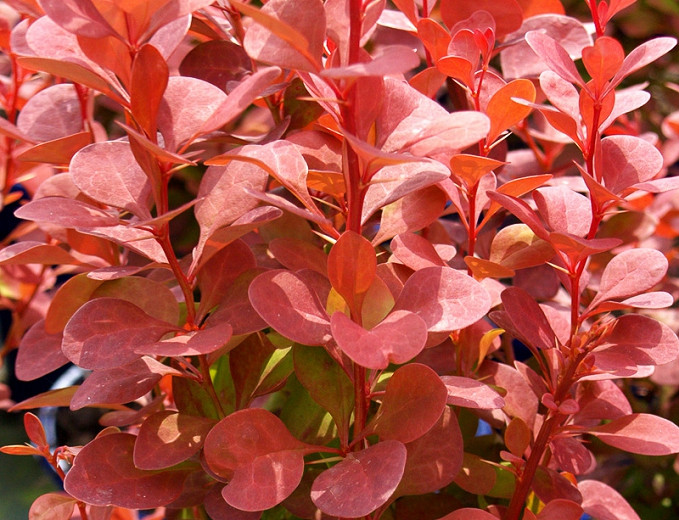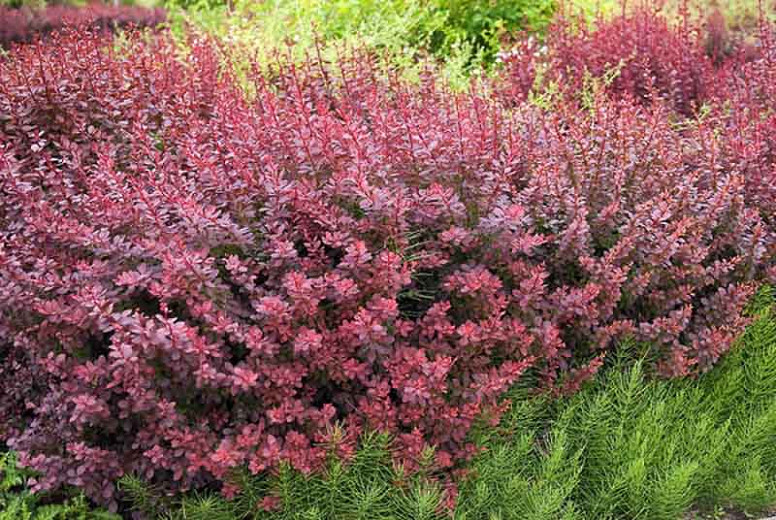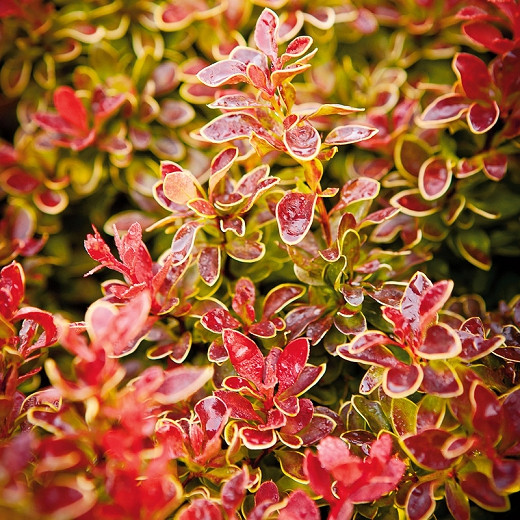Berberis thunbergii f. atropurpurea Rosy Rocket (Japanese Barberry)
Berberis thunbergii 'Rosy Rocket' (Japanese Barberry) is an upright, deciduous shrub with striking deep red leaves adorned with soft flamingo pink when young. Over time, the foliage matures to deep burgundy, creating an interesting bi-color effect. The leaf coloring deepens during the year, particularly in fall when the variegation gets more marked. Tiny, pale yellow flowers appear in spring, but they are insignificant in comparison to the foliage. They are followed by an abundant crop of bright crimson-red berries in the fall, which are attractive to birds and often remain on the spiny coral stems after the leaves have fallen, therefore extending the season of interest of this ornamental shrub through the winter. 'Rosy Rocket' is perfect for brightening borders or containers.
- Grows with a tight columnar habit to 4 ft. tall (120 cm) and 18 in. wide (45 cm).
- Performs best in full sun or part shade, in average, dry to medium, well-drained soils. Best foliage color when grown in full sun. Japanese Barberry is not fussy about soils provided they are not soggy or wet. Good drainage is essential.
- Drought, pollution, deer, clay or dry soil tolerant!
- Japanese Barberry is very adaptable. Excellent choice as a single specimen plant, massed in beds, borders, as informal screens or hedges.
- Fairly pest-free, easy to grow and to care for. May be subject to powdery mildews.
- Propagate by semi-hardwood cuttings. Trim hard back at an early age to encourage strong basal branching.
- Ingestion may cause mild stomach upset.
- Berberis thunbergii species is invasive in the United States. The invasive potential of the more than 40 cultivars of Japanese Barberry is not well known.
- Discover beautiful U.S. native plant alternatives.
Requirements
| Hardiness | 4 – 8 |
|---|---|
| Heat Zones | 5 – 8 |
| Climate Zones | 2, 2B, 3, 3A, 3B, 4, 5, 6, 7, 8, 9, 10, 11, 12, 13, 14, 15, 16, 17, 18, 19, 20, 21, 22, 23, 24, A3 |
| Plant Type | Shrubs |
| Plant Family | Berberis – Barberries |
| Exposure | Full Sun, Partial Sun |
| Season of Interest | Spring (Mid,Late)Summer (Early,Mid,Late)FallWinter |
| Height | 3' – 4' (90cm – 120cm) |
| Spread | 1' – 2' (30cm – 60cm) |
| Spacing | 18″ (45cm) |
| Water Needs | Low, Average |
| Maintenance | Low |
| Soil Type | Chalk, Clay, Loam, Sand |
| Soil pH | Acid, Alkaline, Neutral |
| Soil Drainage | Moist but Well-Drained, Well-Drained |
| Characteristics | Showy, Fruit & Berries |
| Tolerance | Clay Soil, Deer, Drought, Dry Soil |
| Attracts | Birds |
| Garden Uses | Beds and Borders, Hedges and Screens, Patio and Containers |
| Garden Styles | City and Courtyard, Coastal Garden, Informal and Cottage |

